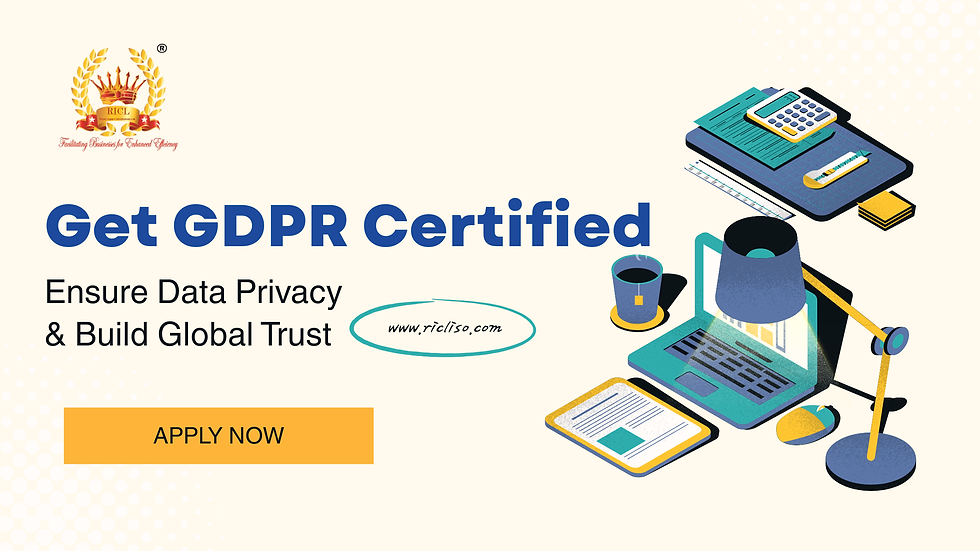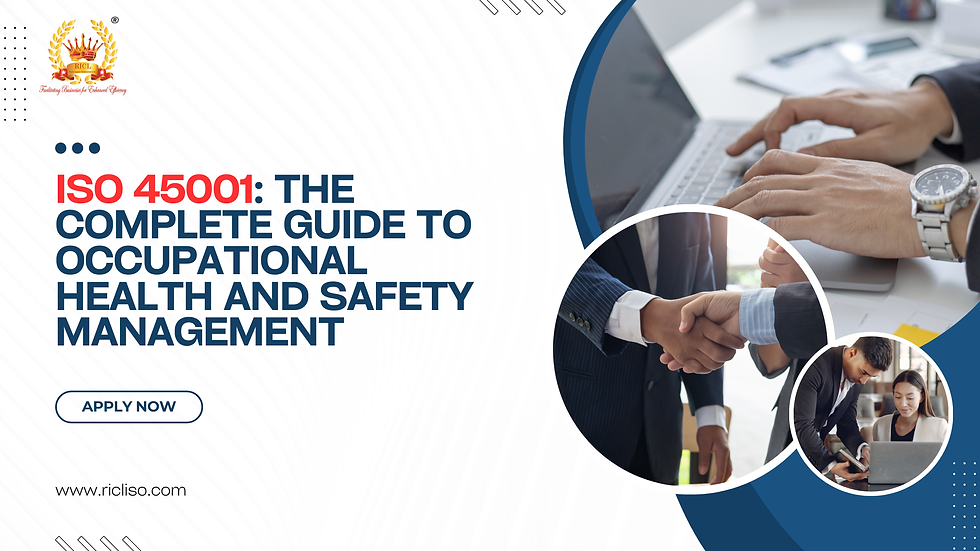Pursuing ISO Certification: A Strategic Guide for Organizations
- teamitricl
- Aug 12
- 3 min read

Introduction to Strategic ISO Certification
ISO certification isn’t just a badge to put on your website—it’s a commitment to quality, consistency, and continual improvement. However, jumping into the process without proper planning can be costly, time-consuming, and frustrating. A strategic approach ensures you get the maximum benefit from your investment.
When done right, ISO certification can open new market opportunities, enhance credibility, and drive efficiency. But the key is knowing when and how to pursue it.
Strategic Alignment
Aligning with Organizational Goals
Before starting the certification journey, it’s vital to ensure your organizational goals match the benefits ISO can bring. If your objective is to expand into international markets, build customer trust, or meet regulatory requirements, ISO certification could be the perfect fit.
Market Access and Compliance Requirements
Many industries—manufacturing, healthcare, automotive, IT services—require ISO certification for suppliers. Without it, you might be locked out of lucrative contracts.
Building a Competitive Advantage
In a competitive market, ISO certification can be a strong differentiator. It signals reliability, quality, and commitment to excellence, which can tip the scale in your favor when customers are choosing between vendors.
Operational Readiness
Assessing Process Maturity
Your processes need to be stable, consistent, and measurable. If you’re still figuring out “how things are done,” you’re not ready for ISO yet.
Documenting Procedures
ISO is all about “say what you do, do what you say.” Having updated, clear, and accessible documentation for your core processes is crucial.
Ensuring Employee Competence
Your team should understand quality objectives and their roles in achieving them. Training and skill development are non-negotiable.
Leadership Commitment
Role of Top Management in ISO Certification
Without leadership buy-in, ISO implementation will stall. Leaders set the tone and drive the cultural shift needed for ISO standards.
Allocating Resources Effectively
Money, time, and skilled personnel are essential. Under-resourcing the project is one of the main reasons ISO initiatives fail.
Setting Clear Quality Objectives
Objectives should be measurable, achievable, and aligned with your company’s vision. Everyone from the CEO to the shop floor should know them.
Readiness Assessment
Conducting a Gap Analysis
This step identifies where your current practices fall short of ISO requirements.
Identifying and Closing Gaps
Once gaps are found, put together action plans—whether it’s better documentation, additional training, or process adjustments.
Prioritizing Actions for Certification Readiness
Address high-impact areas first, ensuring that they support core operations and customer satisfaction.
Implementation Plan
Creating a Timeline and Milestones
Break the project into phases: preparation, documentation, training, internal audits, and external audits.
Assigning Roles and Responsibilities
Every task should have an owner and a deadline to maintain momentum and accountability.
Internal Audits and Reviews
Conducting Internal Audits
Internal audits simulate the external audit and reveal weak points before they become costly.
Holding Management Reviews
These formal meetings ensure leadership stays informed and can make data-driven decisions to improve the system.
External Certification Audit
Choosing the Right Certification Body
Look for a body accredited by recognized organizations like IAF, NABCB, or UKAS. Industry experience is a plus.
Preparing for the External Audit
Have your documentation, records, and evidence of compliance ready. The smoother the audit, the faster you’ll get certified.
Continual Improvement
Establishing Feedback Mechanisms
Encourage feedback from customers, employees, and partners to keep improving your processes.
Benchmarking and Adopting Best Practices
Compare your performance against top industry standards and adapt proven methods to maintain an edge.
Conclusion
Pursuing ISO certification strategically isn’t just about passing an audit—it’s about embedding quality into the DNA of your organization. By aligning certification with business goals, ensuring readiness, securing leadership commitment, and committing to continuous improvement, organizations can achieve long-term operational excellence, enhanced market credibility, and sustainable growth.
FAQs
1. Is ISO Certification mandatory for all industries?No, but it’s often a requirement in specific sectors like healthcare, automotive, and aerospace.
2. How long does ISO Certification take?Typically 6–12 months, depending on your organization’s readiness and complexity.
3. Can small businesses get ISO Certified?Absolutely. Many small businesses gain credibility and attract bigger clients through ISO certification.
4. What is the cost of ISO Certification?Costs vary based on size, scope, and the certification body chosen.
5. How often is ISO Certification renewed?Most certifications require annual surveillance audits and renewal every three years.






Comments